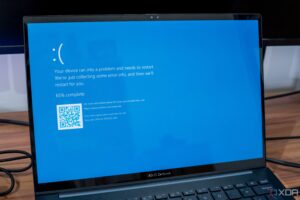
UPDATE: Windows 11 can now be run on the Raspberry Pi 5, with developers revealing surprising performance insights just this month. This breakthrough has caught the attention of tech enthusiasts eager to push the limits of the popular single-board computer.
The Raspberry Pi 5, equipped with 8GB RAM, has been a playground for various projects, but running Windows 11 has proven both challenging and rewarding. New reports confirm that while performance is not stellar, users can now experience Microsoft’s flagship operating system in new ways.
The initial method, known as the Windows on R (WoR) approach, has garnered mixed reviews. Users report that setting it up requires extensive configuration, including flashing a microSD card with a third-party BIOS. This convoluted process has deterred many from attempting to install Windows 11. Installation times can stretch up to two hours, compounded by frequent interruptions from advertisements within the installer.
In stark contrast, the Runtipi containerization environment offers a more efficient solution. With this method, users can install Windows 11 in under an hour without the hassle of ad interruptions. Reports indicate that even with just 4GB of RAM allocated to the container, users could browse with Brave and edit photos using Darktable without significant issues. Despite facing resolution limitations, the Runtipi method has impressed many with its usability.
However, the standout performer in this space is the Botspot VM. This virtual machine approach allows Windows 11 to run smoothly, with the added benefit of easy installation through the Pi-Apps store. Users have praised its performance, particularly when switching to a 1080p display, which eliminated prior resolution issues seen on 4K monitors. This method enables users to operate numerous applications simultaneously, including Notepad++ and VS Code, without crashing.
Despite these advancements, experts caution that the Raspberry Pi 5 is not an ideal platform for demanding applications. Windows 11’s inherent bloat combined with the Raspberry Pi’s limitations suggests that users seeking high performance should consider dedicated x86 systems or alternative single-board computers like the Radxa X4, which features an Intel N100 processor capable of running most Windows 11 applications effortlessly.
As the excitement builds around these developments, tech enthusiasts are urged to share their experiences and insights. The community continues to innovate, pushing the boundaries of what can be achieved with affordable hardware.
In summary, while running Windows 11 on the Raspberry Pi 5 presents unique challenges, the latest methods have made it more accessible. Users can explore this unlikely combination, but for serious workloads, options such as the Radxa X4 or mini-PCs may be more suitable. Stay tuned for further updates as the Raspberry Pi community evolves and refines these methods.





